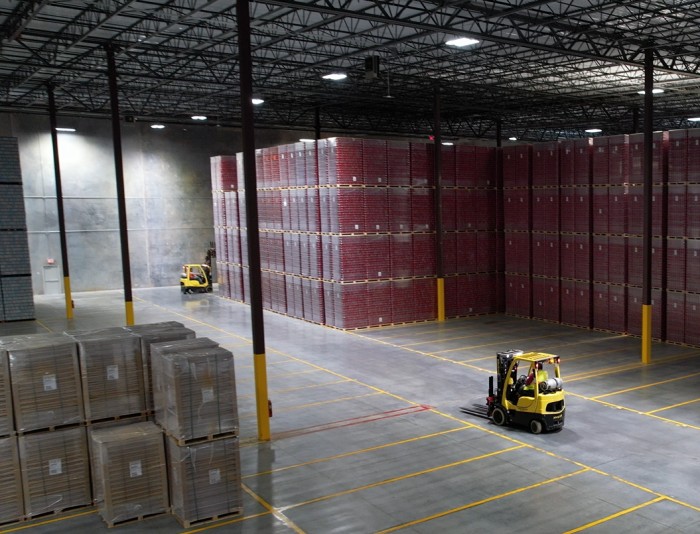
Effective inventory management goes beyond knowing what is on the shelf. It requires control over movement, accuracy, timing, and visibility across the supply chain. As companies grow, internal systems and headcount often struggle to keep up, creating gaps that lead to delays, stockouts, and rising costs. This is where a capable 3PL becomes a strategic partner.
A qualified 3PL brings structure to inventory control through disciplined warehouse processes, reliable WMS tools, and trained teams designed for high-volume environments.
At Buske, as an example, we manage inventory programs for some of the country’s most rigorous supply chains. Customers expect systems to support accuracy, traceability, and smooth inbound and outbound flow.
This guide outlines what 3PL inventory management includes, the capabilities that matter most, the technology behind reliable inventory control, and the providers who stand out in this space, including Buske.
3PL inventory management refers to handing over inventory control to a logistics partner equipped with the systems, people, and warehouse environment to maintain accuracy and movement at scale. Instead of managing stock, cycle counts, replenishment, and storage internally, businesses rely on a dedicated 3PL to run these functions with operational discipline.
A strong 3PL handles:
This allows brands to focus on production, sales, and growth instead of daily warehouse firefighting.
Internal inventory management depends on your own staff, your own systems, and your own warehouse processes. Accuracy and performance vary based on internal resources.
3PL inventory management delivers consistency because the provider has established processes, trained warehouse teams, integrated WMS systems, and the ability to scale with volume. The environment is controlled for accuracy, compliance, and speed, which is why many manufacturers and retail brands prefer outsourcing.
A serious 3PL does more than store product. It has a full operational framework built to protect accuracy and throughput.
Inventory is monitored at the moment it moves, from receiving through dispatch. WMS scanning removes guesswork and ensures each SKU is visible across the network.
Advanced reporting and forecasting help align stock levels with actual consumption and order behavior, reducing excess inventory and preventing shortages.
Automated triggers improve response time, remove manual intervention, and help stabilize production or fulfillment lines.
Routine cycle counts keep records aligned with physical stock. This protects accuracy and reduces shrinkage or reconciliation issues at month end.
Smart slotting improves pick times, reduces congestion, and supports throughput. It also protects fragile or sensitive SKUs through controlled storage layouts.
A capable 3PL connects inventory data into ERPs, sales platforms, and order systems. This provides a single source of truth across operations.
For additional insights, refer to the supporting guide on 3PL inventory management solutions.
Technology determines whether a 3PL can maintain accurate, real-time inventory control. Providers that rely on spreadsheets or outdated tools will struggle with even basic accuracy requirements.
A strong 3PL uses:
These tools maintain control even during peak seasons or rapid SKU expansion.
When evaluating 3PL inventory management software and systems, look for:
The right technology removes blind spots and reduces dependence on manual intervention.
Companies often outsource inventory because the operational pressure of keeping a warehouse accurate becomes a bottleneck. Working with a 3PL stabilises performance and reduces cost.
No need to invest in systems, labor, or a warehouse footprint. The 3PL absorbs these expenses across many clients.
Optimized storage, trained teams, and WMS-driven processes reduce errors and improve order reliability.
Live dashboards and automated reporting give teams the clarity to make production and purchasing decisions quickly.
Inventory needs shift seasonally and year to year. A 3PL can adjust labor and space without requiring clients to expand facilities.
When warehousing and transportation are connected, inbound and outbound flow stabilizes. This is especially valuable for manufacturers and consumer brands that depend on predictable movement.
For companies evaluating outsourced inventory management, here are the providers that deliver strong control, visibility, and reliability.
Buske stands out because of its operational discipline, attention to detail, and the way its warehouse and transportation teams integrate to keep inventory flowing with minimal friction.
3PL inventory management gives businesses the visibility, accuracy, and operational consistency they need to stabilize their supply chains. It reduces risk, improves order performance, and creates the structure required to scale. The right 3PL will combine strong warehouse processes, reliable WMS systems, and a disciplined approach to daily operation.
Providers vary widely in capability. Companies evaluating outsourced inventory control should prioritize partners that understand warehouse execution and can support both inbound and outbound flow. Buske is one of the providers equipped to support this, especially for industries that rely on accuracy and predictable movement.
For further learning, see the supporting guide on warehouse inventory management best practices.
It refers to outsourcing inventory control, tracking, storage, and replenishment to a logistics provider equipped with the systems and processes to maintain accuracy.
Buske, Ryder, ShipBob, Red Stag, and several regional providers offer controlled inventory management programs.
Through WMS systems, barcode or RFID scanning, cycle counts, and real-time reporting across all warehouse activities.
Yes. Many brands outsource to reduce cost, stabilize operations, and improve accuracy.
Buske is a strong option for companies that prioritize accuracy, visibility, and warehouse discipline across their supply chain.
Buske is built for companies that need inventory managed with consistency and structure. The organization focuses on accuracy, controlled movement, and tight communication between warehouse operations and client teams.
Buske’s strength lies in operational control, inventory stability, and warehouse execution for brands that cannot afford mistakes.
If your supply chain needs tighter inventory control, more reliable warehouse execution, or a partner that can support complex inbound and outbound requirements, Buske can help.
Connect with our team to discuss your inventory challenges and explore a solution built around your operation. Contact Buske Logistics to get started.